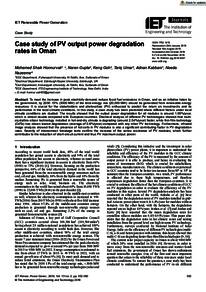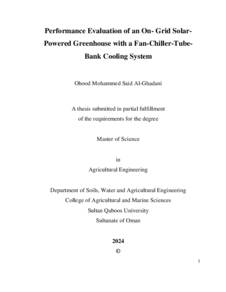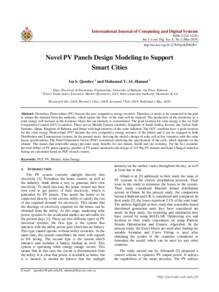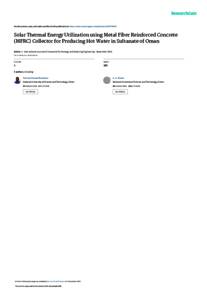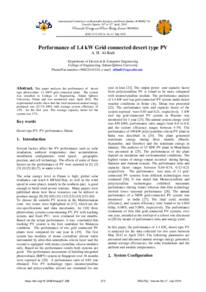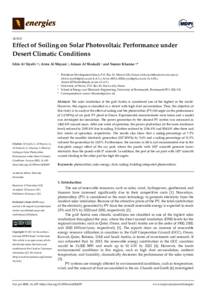Document
Case study of PV output power degradation rates in Oman.
Identifier
DOI: 10.1049/iet-rpg.2018.5457
Source
IET Renewable Power Generation. v. 13, 2, p. 352-360
Contributors
Gupta, Naren., Author
Goh, Keng., Author
Umar, Tariq., Author
Kabbani, Adnan., Author
Nazeema, Needa., Author
Country
United Kingdom.
Publisher
Institution of Engineering and Technology.
Gregorian
2019-02-04
Language
English
English abstract
To meet the increase in peak electricity demand, reduce fossil fuel emissions in Oman, and as an initiative taken by the government, by 2030 15% (3000 MW) of the total energy mix (20,000 MW) should be generated from renewable energy resources. It is crucial for the stakeholders and photovoltaic (PV) enthusiast to predict the return on investments and its performance in the local climatic conditions. In this study, a case study has been presented where different factors under local climatic conditions are studied. The results showed that the output power degradation for all modules is around 1.96%/year, which is almost double compared with European countries. Electrical analysis of different PV technologies showed that multi-crystalline silicon technology installed in hot-and-dry climate is degrading (around 2.54%/year) faster, while thin-film technology (CdTe) has shown lowest degradation (average of 0.8%/year) compared with any other PV technology. Furthermore, infrared image analysis showed that the presence of hot cells in PV modules is also a significant contributing factor in PV degradation rates. Severity of interconnect breakage tests confirm the increase of the series resistance of PV modules, which further contributes to the reduction of short-circuit current and thus PV maximum output. power.
ISSN
1752-1416
Category
Journal articles

